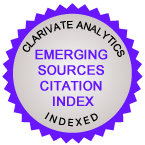Judicial application and limitations of artificial intelligence
DOI:
https://doi.org/10.21638/spbu14.2025.117Abstract
The emergence of new technologies offers wide-ranging opportunities for the development of the judicial system. Technological advances are completely modernizing the judicial and legal system, creating a channel for judicial reform — smart justice, an area of innovation in China’s judicial technologies. Smart justice represents a modern leap forward in human legal civilization, blending judicial system reform and information technology revolution. In the new era in China, significant changes are observed in the judicial system, including smart courts and smart procuratorates, supported by important legal norms and policies, with special attention given to fundamental improvement of the existing legal system. This reality, organized by the state, represents a form of “Chinese innovation”. Innovative development of the judicial system, combined with a deep synthesis of intelligent technologies, creates an objective basis for the application of intelligent systems in the judicial process. However, the dual nature of AI technologies means that while increasing judicial efficiency and reshaping the judicial process, intelligent systems also face the impact and challenge of traditional legal ethical concepts. Due to insufficient rational understanding of the limits of application of intelligent systems, there is a violation of their supportive role. It is necessary to strictly control the application of intelligent systems within certain limits, using technological rationality to eliminate deviations from value rationality, using value rationality to counteract the influence of technological rationality, correcting and regulating the limits of application of intelligent systems. Considering the position of instrumentalism and the auxiliary status of AI in the judicial process under the influence of rationalism as the main principle, limiting the scenarios for the application of AI in justice, establishing regulation of usage scenarios, improving the model of regulating the restriction of AI application, ultimately smoothing the tension between justice and artificial intelligence technologies, and exploring a rational path for justice.
Keywords:
artificial intelligence, judicial application, AI-judicial system, limits of application restrictions, smart justice, digitalization, courts’ decisions
Downloads
References
Downloads
Published
How to Cite
Issue
Section
License
Articles of "Vestnik of Saint Petersburg University. Law" are open access distributed under the terms of the License Agreement with Saint Petersburg State University, which permits to the authors unrestricted distribution and self-archiving free of charge.






